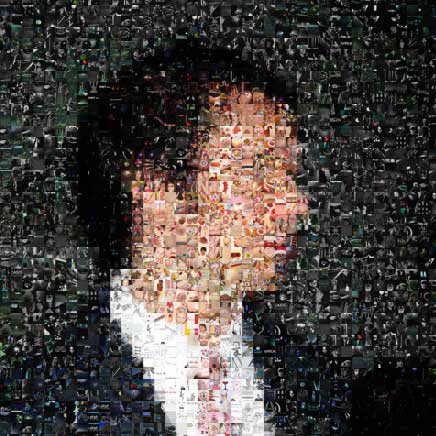The greatest.
[Screens Around Town] Nivea, Newsweek, and "Yes to All"
Really nice question-based flow to get what you need at the NIVEA Logo Download Finder.
Newsweek sliders
Rob Alan writes:
The new Newsweek.com is showing some slider love, such as this one for font size:
and this one (bottom) for the Top Ten range:
“Yes to All”
Scott Hughes writes:
I saw the enclosed dialogue box on a colleague’s PC and thought that you might find it amusing.

Productive jealousy
Jealousy doesn’t have to be a negative emotion. It doesn’t have to be a cohort of anger or resentment. All it needs is a dash of hope.
I’ve always been a jealous person. I’ve always wanted things that others had. Skills they possessed. Authority they held. Success they enjoyed. But instead of feeling sorry for myself and growing spiteful of others, I found it to be the best motivation to imitate, adopt, and strive for the same rewards.
For me, all it took was a core belief that there was no reason I couldn’t do the same. That there was no such thing as a cosmic conspiracy allowing just a chosen few to prosper and oppressing the many.
I’m saddened every time I meet those who believe to the contrary. I think it’s such a fundamental enabler for achieving more that it almost seems unfair that it’s not a universal instinct instead of an acquired belief.
Artistically stunning animated graffiti
I especially love the Bill Plympton-esque person-inside-a-person stuff.
Memo: One of the best design agency sites I've seen in a long time
This weekend I was in NYC speaking at the AIGA Smart/Models conference (thanks again for the invite, Liz). One of the other speakers was a designer named Douglas Riccardi. After his talk I checked out his site.
It’s one page. It lists the name of the agency at the top. Then it says “A graphic design firm” in NY. Then it lists his phone number and email address.
Then it shows his work. Not links to case studies or a portfolio page. Just pictures of his work. He doesn’t have to bullshit. He doesn’t have to give detailed descriptions of what he did, what the goal was, or display the obligatory testimonial quote from the client. It’s just the work. Here it is. It speaks for itself. This is the kind of stuff I do.
Then at the bottom of the page it says “Thank You,” lists the phone number again, and simply states “Please call us to learn more about our firm.”
It’s as effective as any agency site I’ve ever seen. More so, in fact. It’s not full of filler, full of effects, full of slick transitions, full of clicks, or full of “typical design company stuff.” Instead, it addresses the problem directly: It’s just the name, a single statement “a graphic design firm,” pictures of his work, a “thank you,” and a phone number and email address.
It’s perfect. Excellent stuff.
Think about paths instead of hierarchies
I’ve been re-exposed to “industry” web design practices while staying with some friends in Germany who work at a large agency. In particular, I’ve seen that hierarchical navigation and site organization tactics are no distant memory. A lot of clients still come to the table with an org chart and ask their designer to implement the same structure on their website. The result is a website that reads like an office directory in the skyscraper lobby. Or the hierarchy approach can lead to terms that simply block customers from finding what they want. For example, my friend did some work for a shoe company who wished to hide six different kinds of shoes behind a gate called “Performance”. When my friend asked 40 uninvolved people in his office what the category “performance” meant to them, only 10 had even a vague idea. So hierarchies have their problems. What other organizing methods could we consider instead?
Instead of thinking in terms of hierarchy or up-front structure, I think it’s better to work with paths. A path is a line that goes from a starting point A to an accomplishment B. Each customer who comes to the site doesn’t care about the overall structure. They care about getting from A to B. That’s a path. Where are your golf shoes? That’s a path. Does my cell phone support international calling? That’s a path. Collect all the paths you can think of in a pile, pull out the 8 paths that 80% of your visitors come looking for, and that’s your home page. When paths overlap or the same customer needs them, weave them together. Add the occasional fork. DRY out paths with lots of overlapping information for efficiency. These operations feel concrete, and they connect directly with customer goals instead of organizational box drawings or hand-wavy concepts.
Lines are better than boxes for mapping the contours of your domain. So next time you work with a hierarchy-minded group, try to pull them out of the boxes and talk with them about individual starting points and goals for their customers.
Robert Rauschenberg on process, change, boredom, and more

This obituary of Robert Rauschenberg contains some great quotes from the artist…
An improvisatory process was what mattered most to him:
Screwing things up is a virtue. Being correct is never the point. I have an almost fanatically correct assistant, and by the time she re-spells my words and corrects my punctuation, I can’t read what I wrote. Being right can stop all the momentum of a very interesting idea.
Embracing change is essential:
John Cage said that fear in life is the fear of change. If I may add to that: nothing can avoid changing. It’s the only thing you can count on. Because life doesn’t have any other possibility, everyone can be measured by his adaptability to change.
Boredom and understanding are the same thing:
Continued…I usually work in a direction until I know how to do it, then I stop. At the time that I am bored or understand — I use those words interchangeably — another appetite has formed. A lot of people try to think up ideas. I’m not one. I’d rather accept the irresistible possibilities of what I can’t ignore.
Anything you do will be an abuse of somebody else’s aesthetics. I think you’re born an artist or not. I couldn’t have learned it. And I hope I never do because knowing more only encourages your limitations.
AfriGadget: Constrained Creativity
AfriGadget is a website dedicated to showcasing African ingenuity. A team of bloggers and readers contribute pictures, videos and stories from across the continent. Inspiring stuff.
This guy made a crude helicopter with scrap aluminum and parts from a Honda Civic, an old Toyota and from the remains of a crashed Boeing 747.
Here’s a guy who made a paraglider out of plastic bags and scrap wire.
A home made welding machine from Nairobi. Kids forced to make their own toys show off their ingenuity. In Kenya they’ve developed bio gas generator that turns methane from a manure pit into cooking gas. And this guy turns mortar shells into coffee makers.
And this one will blow you away: A homemade windmill from very spare parts. Includes a video of the creator at the TED conference.
So much from so little. Impressive.
Haste is a form of violence.
I’m an extremely fast paced, frenetic person, but I’m learning to calm down and chill out. In a book I picked up recently this sentence is repeated in every chapter: “Haste is a form of violence.”
Those six words have slapped me across the face a few times lately. I notice that I am in such a rush to get things done that I don’t do them as well as I can. I go through hundreds of support email logs gathering times so I can average my reply speed, and in doing so I see hasty responses that could have been better had I spent just a little more time.
I stand in line for coffee and tap my foot thinking “Let’s go, let’s go, let’s go!” Then I realize how violent my need for speed may be. Waiting on the slowest barista ever is only going to cost a few minutes of my day.
I’m trying to stop focusing on a few minutes here and there and instead embrace a chance to lose them, knowing I’ll produce something of quality. (Not quantity.) I hope this is something I never stop learning.
Product Blog update: GTD with Backpack, Getting Real case studies, updated Ta-Da List Widget, etc.
Some recent posts at the 37signals Product Blog:
Extras
New version of Ta-da Lists Widget released
Having problems with your Ta-da Lists Widget? Then go ahead and download v1.3, released today.
Case Studies
Getting the most out of Backpack as a GTD (“Getting Things Done”) solution
“For example, I’ve been invited to a special luncheon with the Internal Revenue Service in a couple of weeks, and they’d like me to bring along a few things (financial records and such). Before Backpack, it would’ve ended up with me emailing myself a pantload of PDF bank statements, then aggregating all of those emails under a specific gmail tag. Obviously, that would have gotten extremely unwieldy in short order. Now I have all of those PDFs arranged nicely on a few Backpack pages (where you can actually store the files, not just link to them), as well as notes about specific items, a picture of my daughter and a copy of the Gettysburg Address.”
Photographer calls Getting Real “one hell of a damn good book”
“When I first looked at starting out as a photographer I put together a shopping list of equipment that I MUST HAVE! Without this list I thought I would never start. It was £20,000 in size. And would have made me spend a huge waste of time doing cashflow predictions and presentations to bank managers and investors. Why did I not think my current camera would suffice, or my computer, or my printer. I ended up spending £700 on some studio lights a background and some business cards. Like that, I’m ready to go.”
R.O.Why! Marketing saves money and time with Basecamp
“I just want you to know that Basecamp is saving my business hundreds of dollars a month since switching. Used to use a huge, cumbersome, complicated and headache-producing project management & client collaboration software system that clients hated to use. And it was expensive. And did I mention that we couldn’t get clients to use it? It took a couple hours or more to set up a complex project. With Basecamp, I’m done – including milestones & tasks – in 15-30 minutes and every one of our clients uses it and loves it.”
Revixio, creators of CorePage, inspired and informed by Getting Real
“We had always wanted to work the way that was outlined in the book; getting the majority of the UI nailed down first, and using that as a blueprint for coding, rather than page after page of functional specs, so that part was an easy sell. In fact, as I spoke with others involved in application development that I told about this, they were jealous that their companies didn’t work this way. It not only made sense, but really allowed us to see things from the user’s point of view very early on.”







